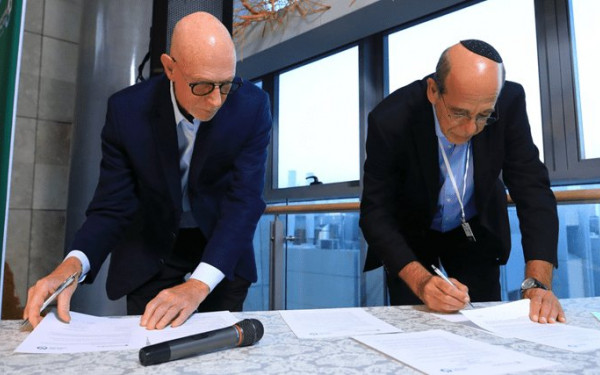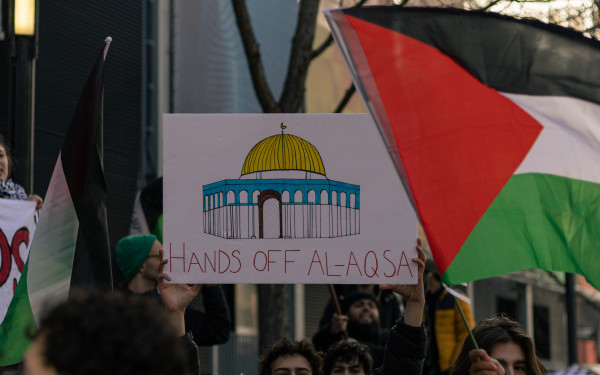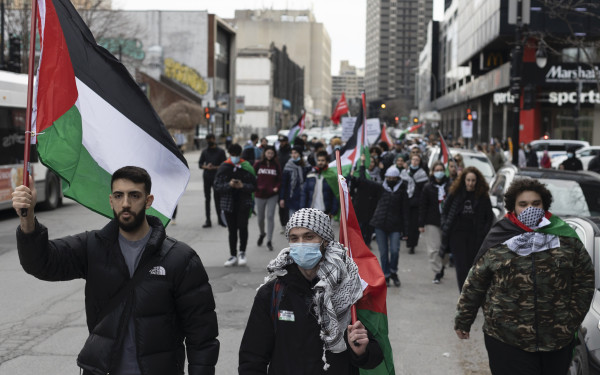50 years of Concordia student activism: a timeline
How Concordia University has bore witness to some of the greatest activism in the city, and consequently, the change that ensued
To stroll down the Sir George Williams campus is to cross into long-erased but never forgotten footsteps of many student activists who, over the last half-century, have fought tooth and nail for their causes.
Throughout the many semesters that have passed since then, several protests, marches, sit-ins and riots have occurred either in the buildings or on the streets surrounding campus. Here is an incomplete dive into some of the biggest activist actions Concordia students have organized and participated in.
The Sir George Williams Affair, 1969
In the winter of 1968, Sir George Williams University Assistant Biology Professor Perry Anderson was observed mistreating 13 Black West Indian students in his class.
Rodney John was one of them. “Anderson would address the white students by their first names, and he would address all of the West Indians as ‘mister’,” he said in a 2004 interview with then-Link reporter Jeff Campbell. “On the surface, he was treating the West Indian students with respect. He wasn’t calling you ‘boy,’ he was addressing you as ‘Mr. John.’ But it was a differentiation.”
Black students received lower grades than their colleagues for the same work, and out of all of them, not a single student ended the class with a grade higher than C. A complaint was filed with the Dean of Students.

From the spring of 1968 to January 1969, discussions and counsel were held over the issue, all of which were fraudulent in nature. For instance, the report filed over the summer had allegedly been lost in internal mail. The open hearing set up in response saw its two Black professors resign, claiming to “have lost faith in the committee’s fairness.”
On Jan. 29, 1969, over 1,000 students attended the meeting of the new hearing committee in H-110 and hundreds walked out in protest. “In a meeting [with the police and chief of security], they listed what areas they should protect in the event of a riot. Number one on their list was the computer centre, and somebody in our group had gotten hold of the meeting minutes,” said John. “So we decided to occupy the computer centre, basically on recommendation of the administration.”
For several days until Feb. 11, over 400 students held the computer centre and the seventh-floor computer lounge. On that day, between 12:30 p.m. and 1:30 p.m., a fire lit the centre and forced the students out. To this day, there is no knowledge of who started it.
“It was a day I’ll never forget,” John said. Hundreds of students who were outside with him were yelling racial slurs and death threats at the occupants. “Had there not been a line of cops between the mob and the group of us who were there, we would probably have been lynched.”
The protestors were arrested violently. “Students were forced to lay down on broken glass on the floor and beaten with clubs,” said Lynne Murray, a peaceful protestor of the racism in the university.
Police also struck 18-year-old demonstrator Coralee Hutchinson on the head, a non-student from the Bahamas. She suffered a brain aneurysm shortly after, and her parents believe it was due to the trauma she’d received. The university has not acknowledged the potential connection.
On Feb. 12, 97 students faced four charges of conspiracy to commit arson and conspiracy to damage property.
The affair, sometimes referred to as the Computer Riot, is widely considered to be the largest student riot in Canadian history, paving the way for other victims of discrimination to speak up against the perpetrators.
South African apartheid, 1980s-90s
Concordia students and associations alike were quick to take action in protest of apartheid South Africa, especially during the ‘80s and ‘90s.
In October 1981, the Concordia University Student Association (CUSA, predecessor to the Concordia Student Union) got the go-ahead to divest from the BMOl due to its financial ties to South Africa.
However, the proposal to divest occurred a year prior, and the Concordia University South Africa Committee (CUSAC) was quick to express its disappointment with the CUSA’s stalling, as they felt it was an issue of priorities over anything else.

“Since last November, they’ve been telling us, ‘there is always something more important’, but that excuse just isn’t good enough anymore,” said Francesca Worrall of the CUSAC in a Link article by Daniel Maceluch. “I’m no longer prepared to have our [student] money used indirectly to support racism.”
In January 1987, CUSA met with the Concordia Students Against Apartheid (CSAA) and voted to boycott a brewery whose products were sold on campus. Due to its parent company being under full South African control, there was a great sense of avoiding the contradiction of “supporting the existence of an anti-apartheid committee while permitting a beer company with South African interests to advertise and sell on campus,” according to CSAA’s Adrian Archer in a Link article by reporter Armand Thomas.
In February 1993, South African Consul representative Allan Moore was given a cold welcome when he arrived at Concordia University. When he entered the conference room he was meant to give a Black history lesson, Concordia students hollered, “Racist not welcome here.”
Continuously interrupted by angered students, Moore explained that the colonization by Western countries of South African tribes gave them “a touch of Western culture” and nurtured their economy. Third-year Concordia student Carlene Clarke responded that colonization robbed tribes of their freedom and cultures.
Palestinian liberation movement, 2000-now
In the early 2000s, and to this day, Concordia students’ support towards the Palestinian cause has only continued to rise. The SGW campus has been a common gathering ground for Palestinian marches for years.
In November 2000, hundreds of students showed up to vote in the Hall building auditorium during the CSU’s general assembly. The meeting was to discuss a motion to support United Nations Resolution 242, which demands the withdrawal of Israel from Palestine. The motion also called for the CSU to push for a Canadian diplomatic and economic boycott of Israel.
Outside the auditorium, a large crowd of pro-Israeli students chanted anti-war songs. Inside, a debate occurred, in which there was a very evident majority supporting the resolution. The president of Solidarity for Palestinian Human rights group Sami Nazzal had this to say to the minority opposing it: “[you are] brainless people … people who don’t use their brains all of the time.”

Despite the general assembly not having met quorum (about 525 graduate students) the students agreed to bring the resolution to a university-wide referendum. In March 2001, the referendum against Israel, which could be found on the CSU’s election ballot, passed with 54 per cent of the vote.
Further altercations followed in the next several years. Seven Concordia students were arrested in April 2002 following their peaceful protest of Member of Parliament Irwin Colter’s support of Israel. They took over one of the rooms of Colter’s Côte-des-Neiges office for two hours and hung up a banner reading “Canada supports Israeli violations of human rights.”
Police then broke down the office door with a battering ram and escorted the protestors out one by one. The group’s Palestinian representative Samer Elatrash said that “Colter sits in the comfort of his office championing the rights of the occupiers. This isn’t his job as an elected official,” in a Link article by Giancarlo La Giorgia.
Later that year, on Sept. 9, Israeli Prime Minister Benjamin Netanyahu prepared to give a speech in the Hall building. He was invited by Jewish student organization Hillel, and pro-Palestinian students gathered in front of the building to protest his speech.
As tensions escalated between both sides, the demonstrators shattered two windows on the ground level. The riot police were deployed shortly. The officers proceeded to tear gas the building to disperse the crowd and pepper sprayed the protestors. The speech was cancelled.
A few days later, on Sept. 18, a Board of Governors closed session occurred during which a special policy was adopted in order to initiate a “cooling-off period at Concordia University.” The policy banned all Middle-East-related activities and campus activist groups were no longer allowed to carry out any activities on the first and second floors.
The ban was partially lifted two months later, with tabling still forbidden except for CSU elections.
Maple Spring protests, 2012
In March 2011, the Liberal Party of Quebec led by Jean Charest budgeted an increase in university tuition fees by 75 per cent over the span of five years (2012 to 2017), from $2,168 to $3,793. The total amount would result in a total increase of $1,625, or $325 per year. Adjusted for inflation, the rise is about $2,115, or $423 per year.
In response, in December, over 60,000 students across the province formed the Coalition large de l'Association pour une solidarité syndicale étudiante (CLASSE) in hopes to start a province-wide general strike. By February 2012, most student associations in Quebec were on strike.
Montreal saw continuous marches, protests and demonstrations in its streets for a period of seven months, with hundreds of thousands of students wearing, spraying and brandishing the square patch as the symbol of the strike.

Other than showing up in the streets of the city, Concordia students also striked their own campus. They blocked entrances to prevent students and professors from coming in during the exam period, to which the university responded by calling the riot police to forcefully remove the picketers. Despite several demands from thousands of students to have the university accommodate the strike like their French counterparts, no flexibility was granted.
On March 26, 2012, security guards on campus clashed against picketing geography students who were blocking the entrance to their classroom. The guards filmed them against their consent. “I heard a clack [and] I saw the girl who was hit, her face was down,” said the Geography Undergraduate Student Society Vice-President Finance Trevor Smith in a Link article.
An email sent out three days prior by the university to all students warned that it was “no longer possible to tolerate further disruption of university activities by a minority of protestors who refuse to respect the rights of others,” and that it would begin pressing charges against picketers blocking classrooms.
The strikes died down on Sept. 4 after the election of the Parti Québécois, who cancelled the tuition fee increase.
#MeToo Movement, 2017-now
On Jan. 8, 2018, a Concordia creative writing graduate published a blog post titled “No Names, Only Monsters,” in which stories of inappropriate student-professor relationships were described.
This triggered one of Concordia University’s largest public scandals in years, and only days later, the institution announced the creation of the Task Force on Sexual Misconduct and Sexual Violence (SMSV).
In June of that year, the task force released its first study findings, which revealed, amongst other issues, that Concordia students are generally unaware of what services are available to them when it comes to sexual violence.
Nearly 30 years prior to the creation of SMSV, in November 1991, then Health Services director Nancy Torbit initiated a group called the Sexual Assault Prevention Committee. The group was born after she realized the university had no central place to compile sexual assault cases and information about them. “Questions were being asked and it looked like we weren’t dealing with it. But the truth was, none of us knew what we could and couldn’t say or who was doing what,” said Torbit in a Link article by Josey Vogels.
In 2011, the Centre for Gender Advocacy (CGA) alongside the Women’s Studies Student Association call on Concordia University to create an established sexual assault centre on campus. It wasn’t until two years later that the university saw the creation the Sexual Assault Resource Centre (SARC).
However, with two paid employees and volunteers, SARC was left unable to properly handle the load of over 50,000 students. A 2018 survey cites that 70 per cent of students who reported sexual assault at Concordia were left unsatisfied with the service.
In March 2022, the Teaching and Research Assistant at Concordia Union (TRAC) openly protested Concordia’s mishandling of sexual assault cases
In October of that year, TRAC, CGA and Concordia Student Union (CSU) along with other student associations boycott the standing committee due to feeling unheard.
In January 2023, TRAC, CSU and the Graduate Student Association (GSA) along with others formed the grassroots Inter-organizational Table for Feminist Affairs (ITFA), began a grassroots bid to replace the university’s committee.
This article originally appeared in Volume 44, Issue 1, published September 5, 2023.

_600_832_s.png)

_600_375_90_s_c1.jpg)


